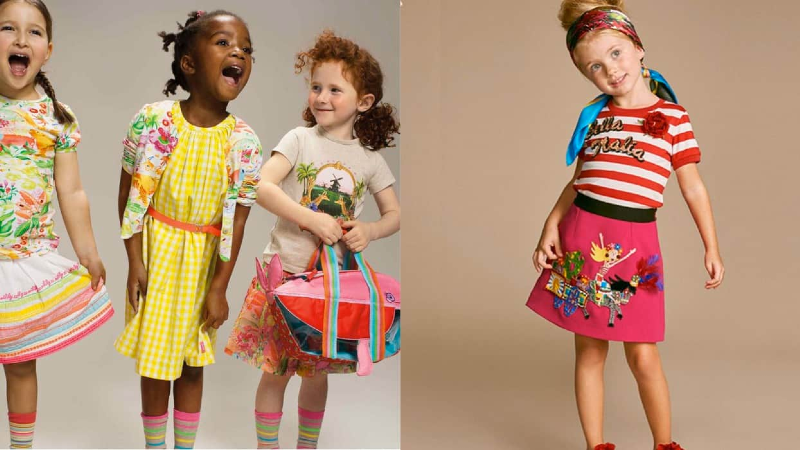If you’re considering starting a clothing brand, numerous factors should be taken into account. Researching your target audience, creating an original design, and finding a manufacturing partner are just a few key points.
Establish a budget and market your clothing line effectively. No matter if selling online or through physical locations, marketing your business is essential to its success.
1. Know your target audience
Establishing your target audience is essential when starting a clothing brand of your own. Doing so will enable you to design designs that will resonate with customers and keep them coming back for more of your products in the future.
Understanding your target customer will also assist in creating product lines and marketing your business more effectively. By understanding their preferences and needs, it will become much simpler to identify what works or needs changing with regard to marketing and selling strategies for your brand.
Once you know who your target customers are, it’s time to explore more about their lives and lifestyles. This will allow you to better understand how best to approach them and which marketing techniques may work well with them, along with any clothing products they might like or be interested in purchasing.
Successful customer research hinges on being innovative and asking pertinent questions of customers. For instance, this could involve asking about their clothing usage habits, any issues they’re encountering and why, and any desired items.
Demographics and psychographics can also help you define your target audience. Demographics is an indirect way of grouping customers together while psychographics focuses on their attitudes, values, and behaviors.
Once you know who your target audience is, the next step should be creating a Brand Value Proposition (BVP). A BVP helps make your brand distinct and helps people recognize it when they see it; additionally, it influences what design and colors should be chosen for logos and other marketing materials.
2. Create a unique design
An essential element in creating a successful clothing line is developing its own distinct design. This could mean something as small as adding custom fonts or color schemes, or it could involve undertaking major transformational efforts such as designing an entirely new layout.
An original design is an effective way to tell your story and stand out from competitors. There are various techniques available to you for accomplishing this, from digital and print design, as well as branding design.
Before creating any product, you must consider its style and materials of construction. Doing this properly will have a huge impact on sales and customer satisfaction.
Step two is determining how you’ll market your brand. While this can be challenging for new companies, here are a few tips to get you underway.
Knowing who your customers are is essential in developing a solid marketing plan and increasing sales. To do this, ask yourself questions about your audience before considering how your clothing line could meet their needs and solve problems – this will enable you to make smart design and manufacturing decisions.
3. Find a manufacturing partner
Finding the appropriate manufacturing partner is integral to any clothing company’s success, whether you are just starting up or are an established clothing label looking to expand its line. Finding a manufacturer who is capable of producing according to your specifications while fitting within your budget requirements is paramount for success.
Find a manufacturing partner that best meets your needs by considering what kind of garment you wish to produce and the amount. When interviewing potential manufacturers, conduct interviews until one becomes suitable for your business.
Select a manufacturer who can ensure the quality of your garments if you plan on selling wholesale to other businesses or to the general public. This decision should especially be considered when selling to individual consumers directly.
An effective manufacturing partner should offer a full suite of services, from production, sourcing, warehousing, and distribution. In addition, they will assist you with creating effective marketing strategies to increase sales and reach target audiences.
As you get started in business, print-on-demand (POD) services may be an ideal way to test the market before investing in large-scale production runs. POD allows businesses to produce custom clothing items without incurring costly inventory costs and production equipment costs.
When searching for a manufacturing partner, the key to a successful meeting should be arriving with a smile on your face and an understanding of your designs, production timeline, and budget. This will help establish rapport with them while convincing them that your brand deserves their time and effort.
4. Set a budget
Step one in creating a budget is assessing your business goals. Once you know exactly what your clothing brand should accomplish, the next step should be establishing a price point that allows you to meet those goals without cutting corners – this requires research and careful planning! Aim for between 30%-50% profit margin which should cover start-up costs while still funding an outstanding team of designers, production specialists, and marketing specialists – there are various sources of funding such as bank loans or crowdfunding websites such as Indigogo/Kickstarter that support creative thinking/innovation!
5. Create a website
Establishing a website to promote your clothing brand is an integral component of success. Not only can it reach a wider audience than physical stores can, but it can also help your products rank well in search engines like Google and Bing.
First things first – register a domain name! This can be accomplished through either web hosting or domain registrar and it must stand out. To help keep things easy for yourself and to provide maximum branding opportunities, choose a name that stands out.
At this point, your website needs a hosting plan. This could come in the form of either a web hosting company or dedicated server service and ensure its accessibility for all users while remaining quick and secure.
Once you have your domain and hosting plan in place, the next step should be building your website. This can be accomplished with either a free website builder or software that uses a graphical user interface instead of code to assist in this task.
Websites are collections of related materials such as texts, images, and other media that share a common goal or theme. A website could consist of as little as several static pages to complex applications running simultaneously.
As part of creating your brand identity, selecting and developing a logo are equally essential steps. Your customers should recognize you by the way your products or services look and represent the values and goals that define your company.








